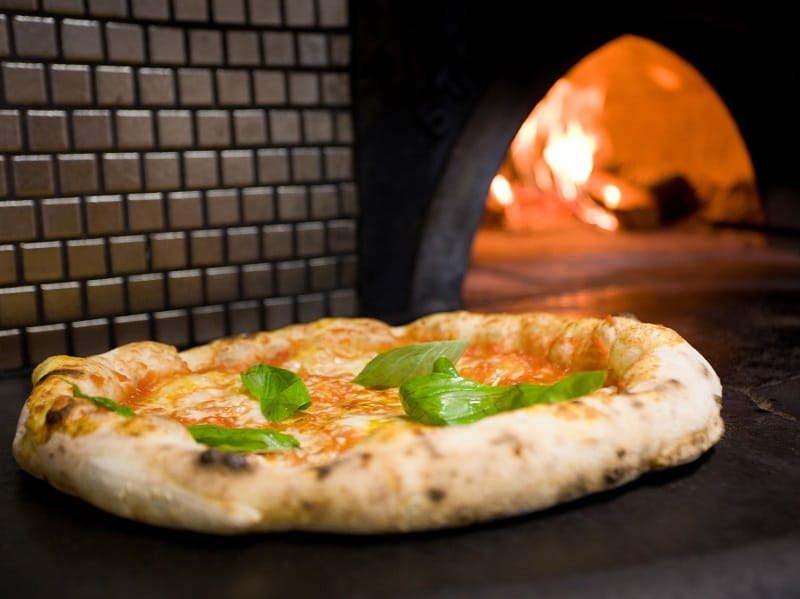The age-old debate between Italian pizza and American pizza has been a topic of culinary discourse for decades. While both styles share the same basic ingredients – dough, sauce, and cheese – the execution and philosophy behind each approach vary significantly. In this article, we’ll delve into the nuances that distinguish Italian pizza from its American counterpart, exploring the contrasting elements that make each style unique.
Dough Fundamentals: Thin vs. Thick
One of the most striking differences between Italian and American pizza lies in the foundation – the dough. Italian pizza is renowned for its thin, crispy crust, often hand-tossed and cooked at blistering temperatures to achieve a delicate balance of crunch and chewiness. The crust’s interior remains slightly airy, with a hint of char from the high heat.
In contrast, American pizza features a thicker crust, sometimes hand-tossed or pressed into a pan, resulting in a more substantial, chewier texture. Some regional Italian, such as the Neapolitan style, even utilize specific flours like tipo 00 to create a distinctive texture and flavor profile.
From Vine to Sauce: Flavorful Simplicity vs. Hearty Base
Italian pizza sauce is a study in simplicity, often consisting of crushed tomatoes, olive oil, garlic, and a handful of herbs. This minimalistic approach allows the natural sweetness and acidity of the tomatoes to take center stage, complementing the other toppings without overwhelming them.
On the other hand, American pizza sauce tends to be thicker and sometimes spicier, incorporating additional ingredients like onions, peppers, and a blend of Italian seasonings. This heartier sauce is a robust base, standing up to the generous array of toppings that often adorn American pizzas.
A Cheesy Affair: Mozzarella Takes Center Stage

Source: media.npr.org
Italian pizzas often feature fresh mozzarella, known for its delicate, milky flavor and softer texture. The cheese is either shredded or torn into small pieces, allowing it to melt evenly across the surface.
On the other hand, American pizzas typically rely on shredded mozzarella with a slightly bolder flavor and excellent melting properties. Sometimes, mozzarella is combined with other cheeses like provolone to create a more complex flavor profile and a gooey, stretchy texture.
Toppings Galore: A Celebration of Variety
Italian pizzas tend to showcase a more restrained selection of toppings, often focusing on traditional ingredients like prosciutto, arugula, and fresh herbs. The philosophy behind this minimalistic approach is to allow the quality of the dough and sauce to shine through, with the toppings serving as complementary accents.
In contrast, American pizzas embrace a wider variety of toppings, ranging from classic pepperoni and sausage to various vegetables and unconventional meats like meatballs. Regional preferences also come into play, with styles like Chicago Deep Dish featuring its signature combination of toppings.
Cooking Techniques: Wood-Fired Ovens vs. Modern Conveniences
Traditionally, Italian pizzas are cooked in wood-fired ovens at scorching temperatures, often exceeding 900°F (480°C). This intense heat creates a slightly smoky flavor and a crispy, leopard-spotted crust. The cooking time is brief, allowing the ingredients to meld together without overwhelming the delicate flavors.
On the other hand, American pizzas are typically baked in conventional or specialized pizza ovens. The cooking methods and temperatures vary depending on the style, with deep-dish pizzas, for example, requiring longer cooking times to ensure the thicker crust is thoroughly cooked and the toppings are heated through.
A Philosophical Approach: “Less is More” vs. “Bigger is Better”
A philosophical difference lies at the heart of the Italian vs American pizza debate. Italian pizzas embrace the “less is more” mentality, focusing on the quality and simplicity of ingredients. The emphasis is on letting the natural flavors of the core components – the dough, sauce, and cheese – take the lead, with toppings serving as subtle enhancements.
On the other hand, American pizzas often embody a “bigger is better” approach, celebrating a wide range of flavor combinations and generous portion sizes.
Beyond the Slice: Cultural Significance and Traditions
In Italy, pizza is a fast, casual food, with regional variations reflecting local specialties and ingredients. It’s a staple of everyday life, enjoyed as a quick lunch or a simple dinner. It has become synonymous with gatherings, celebrations, and comfort food in America.
It’s a go-to choice for parties, movie nights, and impromptu get-togethers, often customized to individual preferences. The communal aspect of sharing a pizza is deeply ingrained in American culture, fostering a sense of togetherness and informality.
I’m Christopher, and I want to share Georgio’s story with you. This independently owned, family-operated restaurant is more than just a place to eat – it’s a labor of love. My dad and I have poured over thirty years of combined experience into this business, and it’s truly a dream come true.
When we took over Georgio’s in July 2012, our goal was to create a welcoming space where people could enjoy top-notch food and feel like part of the family. We’ve worked tirelessly to make this dream a reality, and today, Georgio’s is a thriving eatery known for its high-quality cuisine, inviting atmosphere, and unwavering dedication to customer satisfaction.
